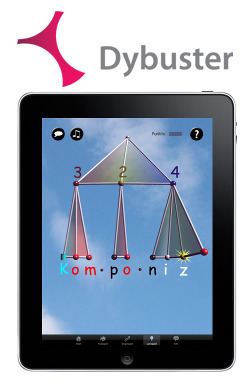Type Public Headquarters Zürich, Switzerland | Industry Educational software Area served Worldwide | |
 | ||
Products Dybuster Orthograph & Dybuster Calcularis | ||
Dybuster creates multi-sensory, computer based therapy systems for people with dyslexia and dyscalculia. These systems were developed at ETH Zurich and evaluated in scientific user studies together with neuropsychologists from University of Zurich.
Contents
Dybuster was founded by Christian Vögeli in 2007 as a spin-off of the Swiss Federal Institute of Technology in Zurich and has its headquarters in Zürich.
Hypothesis
Dyslexia also known as reading disabilities creates several possible symptoms. It is assumed, among other things, that auditive, visual and phonological deficits. In simplest terms, these deficiencies lead to difficulties in the task of translating the written language into the spoken language while reading, and, conversely, in writing the spoken language to the written language.
The basic principle of Dybuster Orthograph is therefore to offer a word not only as black letters on white sheets of paper. Instead, each word is represented as a clearly defined and computed combination of colours, shapes, structures, and sounds. Dybuster thus implements multi-sensory learning, which is generally regarded as an efficient form of learning. As a specific motivation for dyslexia, this additional information is intended to make the representation of the spoken language into the written language easier to learn and easier to retrieve by allowing the brain to use regions, which are less used in conventional language learning.
Proof of Effectiveness
The effectiveness of Dybuster Orthograph to improve spelling has been tested in two user studies at the University of Zurich. The subjects trained 15 to 20 minutes per day at 3 to 4 days per week for 3 months. In the first study the authors found a significant reduction in spelling errors of an average of 35% among the training subjects compared with an improvement of an average of 5% in control groups, which Dybuster was only allowed to use in a second training phase.
The second study reproduced the training progress of the first study. In addition, it could be shown that during the course of the training the subjects were always less likely to make phoneme-graphemes. The authors concluded from this hypothesis that multi-sensory learning allows the imaging of the spoken language to be enhanced, even if the underlying neurological mechanisms have not yet been demonstrated, for example, with fMRI scans.
Use
Dybuster Orthograph is divided into three games. The colour game is a recognition game with colours assigned to each letter, the graph game uses syllable separation and their representation are practiced as a 2D structure, and in the learning game the words are spoken and have to be entered with the help of the multi-sensory representation. With the help of information theory and machine learning, the learning and error behaviour of the user is analysed in the background, [5]. Based on the analysis, the words are selected individually for each user. In addition, Dybuster contains a learning state for the intrinsic motivation as well as a reward system for the extrinsic motivation.
The users can use Dybuster Orthograph independently. The following assignment, as described for the studies, is proposed:
The training should take 15 to 20 minutes per day. The units should be carried out regularly, i.e. 3 to 4 times a week. When the training is started with Dybuster Orthograph, work should be carried out for approximately 4 months in the intensity described so that the multi-sensor linkages can be established. A computer program can not replace promotion by trained professionals. It is, however, hardly possible for specialists to work more than an hour a week with those affected. Therefore, it is suggested that Dybuster Orthograph supplemented the promotion through independent, possibly domestic training.
Hypothesis
Different games simultaneously address as many regions of the brain as possible by representing numbers as quantities, words, Arabic numerals or positions on a number ray. Dybuster Calcularis supports the learning and consolidation process by systematically addressing different sensory qualities like colour and form. Goal-oriented, successful support must begin by precisely determining the mathematical developmental level of each child and proceeding in a step-by-step manner from thereon in. Dybuster Calcularis adapts to the skill level of each individual user and consistently strengthens the student's comprehension of an expanding and developing number line. The software promotes excellent development of mathetical thinking and building of mathematical knowledge.
Proof of Effectiveness
Scientific user studies by the Children's Hospital Zurich and the Swiss Federal Institute of Technology in Zurich were able to demonstrate significant learning success with Dybuster Calcularis. Study participants were compared with children who had studied without the Calcularis software over the same period of time. Tests relating to the mental number line and calculation showed measurable improvements in the children who had practiced with Calcularis. After just 12 weeks, they were able to solve around 30% more addition problems and 45% more subtraction problems correctly.
Use
Dybuster Calcularis selects games automatically based on the user's individual skils and problem areas, enabling learners to maximise their learning progress. As well as developing number processing skills and the comprehension of a mental number line, the games allow learners to practise the basic mathematical operations of addition, subtraction, multiplication and division. Learners lay the foundations required for the acquisition of all future mathetical knowledge.
